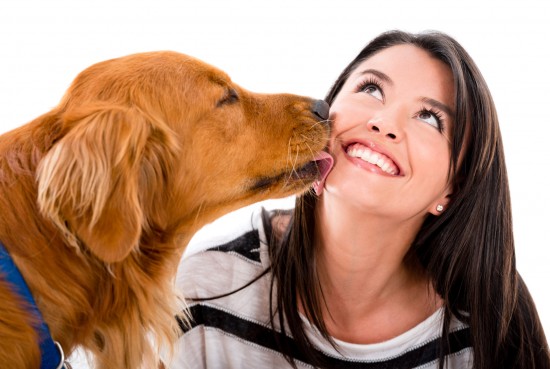
Every dog owner has certain dog obedience issues at certain points, and it is not difficult to believe you are isolated with this problem. Don’t worry! Many,many other folk will be having similar dog obedience problems and the great news is that these problems can be overcome!
1. Toilet Training Issues
Dogs instinctively want to move away from the home to urinate. Nonetheless, there is a dilemma when the dog doesn’t recognize that the complete house is their home and also when the dog is not taken outside regularly enough to urinate. So if you’re not letting your dog out regularly enough – the problem is easy to solve! Although, once a dog has messed indoors, he could feel that it’s all right to do it another time.
Create a program for the dog to toilet at the same times each day, and praise them profusely. However, don’t get irritated if your dog does relieve himself inside. Anger and shouting don’t benefit when dog training.
Make a distinct noise, such as clapping your hands, when the dog begin to relieve itself in the house, and remove the dog outdoors straight away so they begins connecting outdoors with relieving themselves.
2. Aggression Problems
There are several of notions why a dog may be aggressive. Supposing that you adopted your dog in maturity, the dog could have been badly treated as a pup. If you brought up the puppy without the correct training, they may be trying to assert dominance over those around them. If the dog is bored or has surfeit energy the dog could have developed nervousness issues that need to be reduced by firm, alpha authority.
Food Aggression – Should your pet demonstrate indications of food aggression, retrain , by putting together an eating schedule. Begin feeding the dog only 2-3 times a day. By being the source of the meal, they look to you for the food instead of attempting to guard what they think is theirs.
Aggression Directed at Children and Strangers – This training employs positive re-enforcement. Put your dog on a leash and place yourselves far away from the cause of aggression. Give your dog praise and treats and then walk closer to the cause of aggression. They will ultimately begin to know this as a source of reward and get excited rather than aggressive.
Aggression Towards other Dogs – This could be an indication that your dog doesn’t have a positive leader in the pack and the dogs are battling with each other for that position. If this occurs, you have to adopt the dominant leadership position. Generally, simply by showing confirmed leadership, you can abolish any negative behavior in the dogs of your house to each other. Also, refrain from making a fuss when another dog approaches. Your dog draws on your apprehension and will respond in consequence, specially when on a leash.
3. Digging
If a dog digs, it is due to an inherent reason to do so. Generally, they delights in it though it could become obsessional. Unfortunately, the dog is destroying your flower garden or your backyard in the process. Frequently, digging is a result of excess energy and boredom and the dog could use digging as a release for that excess energy. Ensure you exercise and play with your dog. Cover up any parts in your garden you don’t want dug up. Fix up the dog with a his own digging place and take them to it every time the dog starts to dig till they gets the point.
4. Barking
Every dog barks sometimes – whether to show enthusiasm or to communicate that they are bored. The concern is that a number of dogs do not stop barking. The goal then is to lower that barking.
Don’t give your dog what it wants when he barks. If you need to wait them out, do it – providing what the dog wants when the dog barks at you will just train it to continue. Simple training could be very instrumental in minimizing barking in your dog. Teach them to sit, lie down, and be quiet. These simple commands lead them to switch focus to you and away from what they are barking about. So at any time your dog barks overmuch employ the sit command, until the barking stops, then praise and reward.
5. Chewing
Chewing starts when a pup but as your dog becomes older, chewing could become a major problem. Owners that give their puppy socks or shoes are basically telling them that this is okay. Make sure you have an alternative like a rawhide chew, to hand them when the dog starts chewing on a cushion or shoe. There are sprays on sale at most pet stores that are unpleasant to a dog when it chews. Furthermore, you should train your dog to “leave it”. This command takes time to learn but will make a huge difference to the dog chewing problem.
6. Jumping
Dogs love to jump, it’s a way of showing their excitement. Nonetheless, it can be hazardous, notably if your dog is large. Do not clutch the dogs paws or shove them away – whilst this is effective immediately – this will not work in the long term. Jumping can be handled best by simply taking no notice of the dog. Turn your back from them and ignore them. Don’t make eye contact, talk to, or embrace your dog for the initial minutes when you enter the door. When they’ve given you their calm attention, you can reward them gently. Don’t get them roused again, just give a bit of fuss and perhaps a treat. This traines that the dog only gets your notice when it is calm.
7. Bolting Out the Front Door
When that door opens, your dog smells an entire new experience – one evocative of walks, animals and a lot of fun. First, ensure no-one opens the door until they are sure where the dog is and that the dog is safely beyond range of escaping. Start with the essential commands – sit, stay, and down. These are incredibly important for obtaining and holding your dog’s focus to keep their place without running out the door. It won’t resolve the issue at once, though to so much as begin the training operation, the dog needs to know these commands. As you progress, you will be teaching your dog that the door is your domain and that the dog cannot go near without your specific consent. Each time your dog gets close to the door use these commands to restrain its progress until it never goes near the door without you.
8. Pulling on the Lead
For many dog owners, a walk is the most exasperating events of the day rather than one of the best! When you begin the walk procedure in the house, make sure you make your dog sit and stay beforehand. You need to put them into a calm-submissive attitude so that their energy is being steered into obeying your commands. By channelling that energy, you can eradicate the leaping around before taking them out. The important thing here is that you remove the leash if the dog expresss excitement and begins bouncing about. Don’t reward this behavior. The second the dog begins to tug, return to the beginning and start over once more. It could take a while to teach a dog that the dog cannot pull frantically, but if you return to that position over and over again, they ought to get it eventually. Once you finally get to the footpath, it is really important that you abide by the procedure from before. When the dog tugs too hard or starts to get ahead of you, calmly take a couple of steps back and make them sit and stay till you are comfortable walking forward once more. Your dog will learn that they do not get to get on with their walk until the leash is slack. Take a bag of treats with you (or a clicker if you’re using that as a training tool) and when your dog properly walks forward with a slack leash, reward them.
9. Whining
If a dog whines because of separation, it is necessary to train your dog how to tolerate your absence. See about relegating a single room or a crate for the dog to stay in when you go out. Through having their own space that they can go to as their “safe haven”, the dog will feel more comfortable when are away. Don’t give any fuss prior to departure and when returning. To teach your dog how to be comfortable when you go out, you must practice doing it while still in the home. Put the dog in a room or crate. You will have to listen to them whine for a time, however it is necessary that you don’t return to the room before it stops whining.
Not all whining is anxiety related unfortunately. Sometimes, it may be simply to get attention or a side issue of them having too much energy. In other cases, it may be because of them trying to get additional attention. Remember it is invariably best to ignore them rather than to reacting to their conduct.
10. Separation Anxiety
A dog is a very social animal and when dogs are left unattended as you go out, the dog grows anxious and afraid that you will not come back. From whining and barking to destructive conduct like chewing, digging, and tearing, a dog with separation anxiety can be very hard to manage.
When you go out and return home, it is important that you never give your dog alot of attention. For moderate anxiety, just taking no notice of your dog for a short time before you leave and after you return home will reduce their anxiety .
Start by leaving your dog for very brief periods of time. Never give the dog recognition when you come back. Merely keep calm and wait until your dog is relaxed. Repeat this again. Over the course of days, or weeks, increase the time of these stretchs, until you can leave for an entire day.
Your dog is merely a dog, and isn’t attempting to be disobedient or upset you – however they may behave right now. They just have to be given the help from their owner needed to overcome undesirable dog obedience problems.
For more tips and articles on puppy potty training and to stop dog barking check out http://puppy-dog-obedience-training.com/
 What You Need For Whelping- Getting Ready For The Birth
What You Need For
What You Need For Whelping- Getting Ready For The Birth
What You Need For
 The Siamese Cat - An Oriental Talkative Treasure
The Siamese Cat -
The Siamese Cat - An Oriental Talkative Treasure
The Siamese Cat -
 Minimising The Spread Of Canine Germs And Bacteria
Minimising The Sp
Minimising The Spread Of Canine Germs And Bacteria
Minimising The Sp
 Get Animal Help from Gofundme to Raise Funds to Pay Pet's Medical Bills
Get Animal Help from Gofundme to Raise Funds to Pay Pet�
Get Animal Help from Gofundme to Raise Funds to Pay Pet's Medical Bills
Get Animal Help from Gofundme to Raise Funds to Pay Pet�
 Feeding Wild Birds During The Winter
Feeding Wild Bird
Feeding Wild Birds During The Winter
Feeding Wild Bird
Copyright © 2005-2016 Pet Information All Rights Reserved
Contact us: www162date@outlook.com